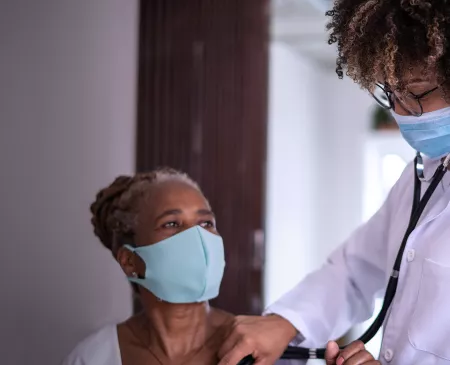The Buzz This Week
On Friday, the Supreme Court of the United States released their decision in the case of Dobbs v. Jackson Women’s Health Organization overturning Roe v. Wade, the 1973 decision to legalize abortion nationally. The 5-4 ruling1, allowing states to determine whether to ban or regulate abortion, was closely in line with the leaked draft opinion from May 2, authored by Justice Alito.
Currently, 13 states have trigger laws that are expected to go into effect. In Kentucky, Louisiana, and South Dakota, trigger laws will take effect immediately. In Idaho, Tennessee, and Texas, laws will automatically go into place 30 days after the ruling. In 7 additional states (Arkansas, Mississippi, Missouri, North Dakota, Oklahoma, Utah, and Wyoming), the trigger law will go into effect after additional steps, most often certification by the state attorney general. All 13 states have differing language on gestational age at which abortion is banned, penalties, and exceptions to the ban. 13 additional states are likely to ban or restrict abortion with this ruling, according to the Guttmacher Institute. Only 16 states and the District of Columbia have state laws expressly protecting the right to abortion.
Why It Matters
The overturn of Roe raises questions in both states that ban abortion and those that protect the right to abortion. For health systems and providers, some of the biggest implications to consider include:
-
Access to Care and Changes to the Clinical Care Model: Certain vital aspects to women’s reproductive care, including prenatal care and care for miscarriages, may undergo changes. There may be new barriers to prenatal care, including potential changes to diagnostic testing at gestational ages that exceed abortion ban gestational age. In certain cases, providers may then try to complete testing earlier in a pregnancy when it is less likely to be accurate.
Miscarriage care is also likely to be impacted. Many miscarriages are not identified until an ultrasound and require medical or surgical intervention to prevent sepsis, other infection, and the prolonging of emotional trauma. Those interventions are the same ones used in abortion care, and there is concern that there may be an unnecessary and potentially dangerous restriction in the use of these interventions in states that ban abortion.
There are also likely to be impacts to behavioral health. The Turnaway Study, conducted by UCSF, found that those women who were denied an abortion were 4 times more likely to live below the Federal Poverty Line, more likely to experience pregnancy complications, more likely to suffer anxiety and issues with self-esteem, and more likely to stay with an abusive partner.
Hospitals and health systems in states that ban abortion will need to consider the clinical impact to care including how to interpret policies around lifesaving clauses in the abortion bans for the person carrying the child because many can be clinically vague, and considerations for Emergency Medical Treatment and Labor Act (EMTLA) that requires stabilizing treatment to any patient who is in labor or experiencing a medical emergency. There may also need to be considerations for potential increases in the number of deliveries and pregnancy complications, including staffing, bed capacity, and operating room (OR) needs. Providers in states that protect abortion will need to consider their role for, and any impact on, out-of-state volumes seeking care (especially those in close proximity with abortion bans). Providers in those states will need to understand how delivering clinical care across multiple jurisdictions or for patients in multiple states will impact them clinically, operationally, legally, and financially.
- Employer Considerations: Depending on each state’s respective laws, there may be several questions health systems and hospitals will need to contemplate as employers. These questions may include how employee retention may change; whether they will follow employers like Starbucks, Amazon, Microsoft, and Apple to provide employee assistance for travel out-of-state to receive abortion care; and for academic health systems, the impact to residency program curriculum and applicants and the potential impact to research on abortion and miscarriage.
-
Health Equity: Adverse events and maternal deaths are likely to increase with abortion bans, and Black individuals are likely to be disproportionately impacted. The most recent data for pregnancy-related mortality ratios (PRMRs) from 2014-2017 published by the Centers for Disease Control and Prevention (CDC) shows the Non-Hispanic Black population has a 2.4 times greater maternal death rate (at 41.7 deaths per 100,000) than the overall U.S. population and a 3.1 times higher rate than Non-Hispanic whites (at 13.4 per 100,000). A 2021 study estimates that a total abortion ban would increase the maternal death rate, disproportionately harming people of color, especially Black individuals. The study estimates a 21% increase in maternal deaths overall, a 13% increase in the Non-Hispanic white population, and a 33% increase among Black individuals. The average distance to the nearest clinic is expected to increase from 25 miles to 125 miles, significantly and disproportionately impacting those without the means to travel or take time off of work. Healthcare for trans individuals could be significantly impacted, including trans men being forced to carry pregnancies to term, and closures of clinics providing hormone therapy and reproductive care.
Finally, many of the same organizations that have offered abortion services are also critical community providers of broader healthcare services, such as preventive screenings, birth control, health education, and gynecological and primary care. In states that restrict abortion, the viability of these provider organizations will be threatened, which would further limit access for vulnerable communities.
Related Links:
The Atlantic
How the End of Roe Would Change Prenatal Care
KHN
Ripple Effects of Abortion Restrictions Confuse Care for Miscarriages
UCSF
Advancing New Standards in Reproductive Health: Turnaway Study
NYTimes
What Would the End of Roe Mean
NBCNews
The Biggest Health Risks Women Would Face if Roe v. Wade Is Overturned
Modern Healthcare:
Supreme Court Abortion Ruling Has Big Ramifications for Providers
1 The court voted 6-3 in the case of Dobbs v. Jackson Women’s Health Organization to reverse the lower court ruling and uphold Mississippi's ban on abortions after 15 weeks of pregnancy, and 5-4 to over Roe v. Wade, with Chief Justice Roberts dissenting on the latter.




